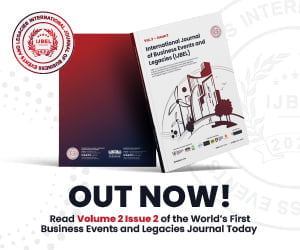The Economist Intelligence Unit has revealed cost of living around the world and for the first time in the survey’s history, three cities share the title of the world’s most expensive city.
The world’s most expensive city title: Singapore, Hong Kong and France’s capital, Paris.
The top ten is largely split between Asia and Europe, with Singapore representing the only city in the top ten that has maintained its ranking from the previous year. In the rest of Asia, Osaka in Japan and Seoul in South Korea join Singapore and Hong Kong in the top ten. The Japanese city has moved up six places since last year, and now shares fifth place with Geneva in Switzerland. In Europe, the usual suspects—Geneva and Zurich, both in Switzerland, as well as Copenhagen in Denmark—join Paris as the world’s most expensive cities to visit and live in out of the 133 cities surveyed.
Within western Europe it is non-euro area cities that largely remain the most expensive. Zurich (in fourth place), Geneva (joint fifth) and Copenhagen (joint seventh) are among the ten priciest. The lone exception is Paris (joint first), which has featured among the top ten most expensive cities since 2003. With west European cities returning to the fold, the region now accounts for three of the five most expensive cities and for four of the top ten. Asia accounts for a further four cities, while Tel Aviv is the sole Middle Eastern representative.
Across geographic regions and countries, the survey observed a degree of convergence in 2018 among the most expensive locations. Some of those economies with appreciating currencies, like the US, climbed up the ranking significantly. In seventh and joint tenth place respectively, New York and Los Angeles are the only cities in the top 10 from North America. A stronger US dollar last year has meant that cities in the US generally became more expensive globally, especially relative to last year’s ranking. New York has moved up six places in the ranking this year, while Los Angeles has moved up four spots. These movements represent a sharp increase in the relative cost of living compared with five years ago, when New York and Los Angeles tied in 39th position.
Tel Aviv, which was ranked 28th just five years ago, sits alongside Los Angeles as the joint tenth most expensive city in the survey. Currency appreciation played a part in this rise, but Tel Aviv also has some specific costs that drive up prices, notably those of buying, insuring and maintaining a car, all of which push transport costs 64% above New York prices.
Last year inflation and devaluations were prominent factors in determining the cost of living, with many cities tumbling down the ranking owing to economic turmoil, currency weakness or falling local prices. Places like Argentina, Brazil, Turkey and Venezuela experienced all of the aforementioned conditions, leading to cities in these countries seeing a sharp fall in their cost of living ranking. Unsurprisingly, it is Caracas in Venezuela which claims the title of the least expensive city in the world. Following inflation nearing 1,000,000% last year and the Venezuelan government launching a new currency, the situation continues to change almost daily. The new currency value has varied so much since its creation and the economy was demonetised compelling people to use commodities and exchange services and personal items like clothing, auto parts and jewellery to purchase basic goods such as groceries.
The ten most expensive cities in the world

The impact of high inflation and currency denominations is reflected in the average cost of living this year. Taking an average of the indices for all cities surveyed using New York as the base city, the global cost of living has fallen to 69%, down from 73% last year. This remains significantly lower than five years ago, when the average cost of living index across the cities surveyed was 82% and ten years ago was 89%.
US cities rise up to meet European veterans
Much of 2018 was marked by continued strong US economic growth and steady monetary policy tightening by the Federal Reserve (the US central bank), which led to a sharp appreciation of the US dollar. With the dollar strengthening against other currencies, all but two US cities rose up the ranking in 2018. The highest climbers were San Francisco (25th up from 37th previously), Houston (30th from 41st), Seattle (38th from 46th) and Detroit and Cleveland (joint 67th from joint 75th). New York (seventh), Los Angeles (tenth) and Minneapolis (20th) are all ranked in the top 20. Domestic help and utilities remain expensive in North America, with US cities ranking highly in these categories.
On the other side of the Atlantic, despite the euro making gains against the US dollar in 2017, these gains went into reverse in 2018 as economic momentum slowed and the election of a populist coalition in Italy raised new concerns about challenges to European integration. Paris stands out as the only euro area city in the top ten. The French capital, which has risen from seventh position two years ago to joint first, remains extremely expensive to live in, with only alcohol, transport, and tobacco offering value for money compared with other European cities. Copenhagen in Denmark, which pegs its currency to the euro, also features in the ten priciest cities in joint seventh place, largely owing to relatively high transport, recreation and personal care costs.
When looking at the most expensive cities by category, Asian cities tend to be the priciest locations for general grocery shopping. European cities tend to have the highest costs in the household, personal care, recreation and entertainment categories—with Zurich and Geneva the most expensive in these categories—perhaps reflecting a greater premium on discretionary spending.
A year of currency fluctuations and inflation
Currency fluctuations continue to be a major cause for changes in the ranking. In the past year a number of markets have seen significant currency movements, which have in many cases countered the impact of domestic price changes.
Several emerging markets suffered currency volatility, primarily as a result of monetary tightening in the US and the strengthening US dollar. In a few instances, however, such as Turkey and Argentina, a combination of factors, including external imbalances, political instability and poor policymaking, led to full-blown currency crises. Istanbul, in Turkey, which experienced the sharpest decline in the cost of living ranking in the past 12 months, fell by 48 places to joint 120th. The reason for this drastic decline was the recent sharp slide of the Turkish lira and annual consumer price inflation surging to 25.2% in October 2018.
The impact of currency devaluation was also felt in Argentina’s capital, Buenos Aires, which has joined the bottom ten in joint 125th place. Like Istanbul, the city also fell by 48 places in the ranking following a crisis of confidence in Argentina, resulting in the peso weakening sharply against the US dollar in August.
In contrast, the endemic high cost of living in the French territory of New Caledonia partly reflects a lack of competition, particularly in the wholesale and retail sectors, which are dominated by a small number of companies. These factors drove its capital, Nouméa, 33 spots up the ranks in joint 20th place.

Another big mover, Sofia (currently joint 90th) in Bulgaria, reflects a rise up the rankings of 29 spots. Bulgaria is an economically stable east European country, which pegs its currency, the Bulgarian lev, to the euro but is yet to join the euro zone. Like many cities in the region, Sofia continues to offer good value for money. Nevertheless, prices for groceries in the capital city are beginning to converge with west European destinations in anticipation of the country adopting the euro currency in the coming years. Growth in food prices (one of the main drivers of 3% inflation in the country for 2018) averaged 2.6% year on year in December 2018. Utility prices (electricity, gas, district heating and water) as well as recreation and culture prices, continued to rise at the slightly higher pace of around 4% over the last 12 months.









